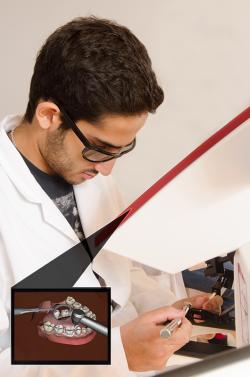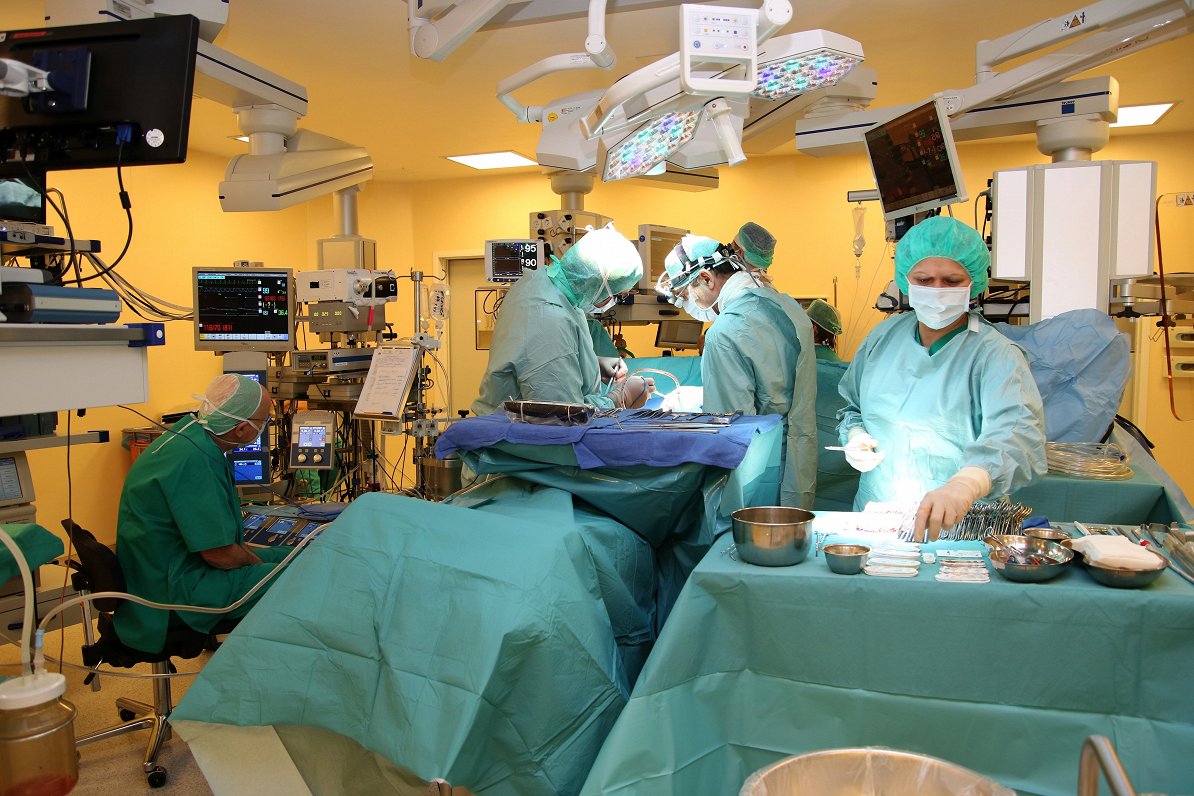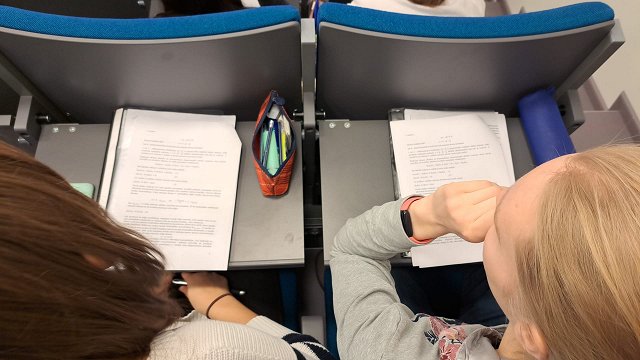Training with technology
Dentistry simulators are one of the modern technologies to enter dentistry training over the past few years. Rīga Stradiņš University is one of the first learning institutions in the world, which allows students to use these sorts of simulators not only to acquire dentistry skills, but also to prepare for work on real patients. Patients with tooth problems have their teeth scanned, and the rest happens in the virtual environment.
“Students can receive this file, come to this room, enter it into the system and virtually contour the tooth. It doesn't matter - 5, 10, 20 times, however many they want and have the strength,” said RSU Lecturer Kārlis Ozoliņš.
When the student finally feels prepared, they can go to the real-life patient and contour the actual tooth.

Friendlier dental implants
Another huge dentistry innovation is dental implants. While they've been around in one form or another for 60 years, it's not as simple as simply drilling a hole in the jaw bone and screwing in a fake tooth. First you need to screw in a dowel, then the implant, then only the fake tooth, and it's very important what type of material is used for the implant, so that it fuses with the bone.
“It's from titanium, which is biocompatible. It's been proven that it completely integrates into the bone, practically fusing with the bone. There's a whole science studying this,” said RSU Associate Professor Anda Slaidiņa.
They're working on new surfaces, thinking about what types of connections could be more effective and less susceptible to microbes that could harm gum health. The University of Latvia is also researching how to improve dental implants. LU Senior Postdoctoral Researcher Roman Viter is a Ukrainian scientist who moved to Latvia through the “Horizon 2020” EU research and innovation support program.
“I've worked in Ukraine 15 years, I've spent three years in Italy. I've worked in Finland and Sweden. The EU has more opportunities. Not a higher wage, but more opportunities for myself as a scientist,” said Viter. International cooperation is very important for his research. With his international partners, Viter is developing a new method, which will serve as the base for producing high-quality dental implants.
“The main problem with dental implants is that they're created from metal. However we, people, aren't made of metal. The mechanical properties are different for metal and bone. As you can't change bone properties, we have to change the mechanical properties of dental implants,” said Viters.
Viter is researching nanostructured metal oxide coatings, 3D scaffolds, obtained by electrospinning deposition of organic nanofibers and lazer patterning of the implant surface using biotechnology, cell engineering and nanotechnology. This allows other elements, such as silver nanoparticles, to be added to dental implants to improve antibacterial properties or promote cell growth.
Fixing broken hearts
Over the years our heart valves are in constant use and can become damaged. We've had the technology and knowledge to replace them for a while, but it involves open-heart surgery, which stops the heart and attaches the person to artificial blood circulation. Now it's possible to do without stopping the heart through a small incision in the groin, which means a shorter surgery and less anesthetics.
With this new operation the old heart valve isn't removed, a new one is simply placed over it through the artery. Although the operation is comparatively short, preparation is very and involves several different specialists. The Latvian Cardiology Center participates in various projects where the valve is narrowed with special darts, which serve as anchors. Then the thread is tightened and valve function is improved.
These anchors, or darts are made of polymer materials, so people with damaged hearts don't have to worry about walking through metal detectors. Although this operation can be completed in one day, the recovery period is much longer. It's not a miracle procedure, but it goes a long way toward improving heart health, and is currently the best method available.
























